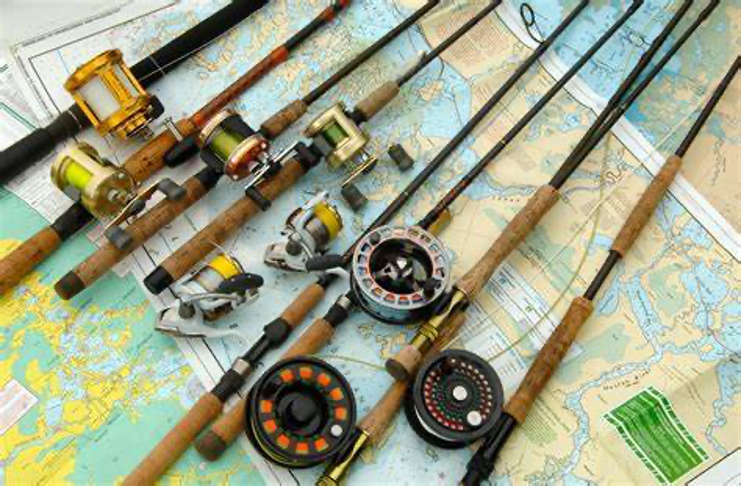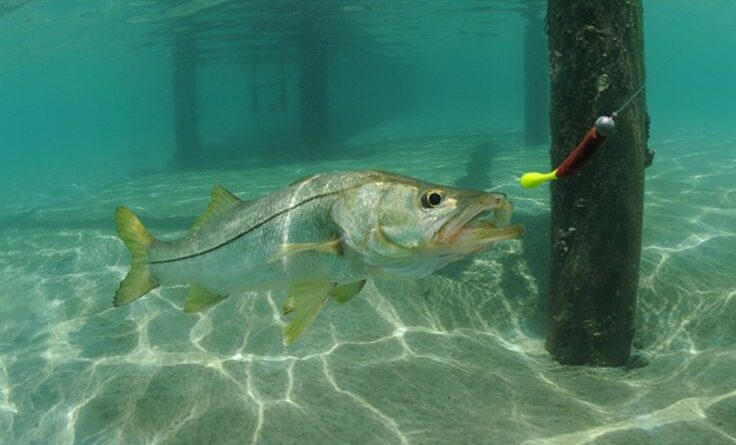Creating a well-rounded saltwater fishing tackle box is crucial for enhancing your prospects when pursuing a wide range of saltwater species. Whether you’re a novice or a seasoned angler, equipping yourself with the correct tools and gear is indispensable. Here, at Cheerfulfisherman.com, we’ve meticulously outlined the indispensable items that should grace your saltwater fishing tackle box:
- Fishing Rod and Reel: Choose a saltwater-specific rod and reel combo that suits your intended fishing style, such as surf, pier, or boat fishing. Consider factors like rod length, power, and action, as well as the type of reel (spinning, conventional, or baitcasting).
- Fishing Line: Depending on your preferences and the specific fishing situation, carry different strengths and types of fishing lines. For example, have a 20-30 lb monofilament line for general use and a 40-80 lb braided line for heavy-duty applications.
- Hooks: Include a selection of hooks in various sizes and styles. For inshore fishing, use smaller hooks (1/0 to 3/0) for species like snook and redfish. For offshore, consider larger hooks (5/0 to 10/0) for species like grouper and snapper. Circle hooks are often preferred for their hook-setting efficiency and reduced fish mortality.
- Sinkers: Include various types of sinkers, such as pyramid sinkers for surf fishing, egg sinkers for bottom fishing, and split shot sinkers for adjusting bait depth when fishing inshore.
- Swivels and Snaps: Use barrel swivels and snaps to connect leaders, rigs, and lures. These prevent line twists and make it easier to change baits or lures quickly.
- Leaders: Depending on the target species, prepare or purchase leaders of different lengths and strengths. For instance, use fluorocarbon leaders for added stealth in clear water and wire leaders to deter toothy predators like king mackerel or barracuda.
- Lures: Stock up on a variety of saltwater lures, such as:
Jigs: Various weights and colors for vertical jigging and casting.
Soft Plastics: Include paddle tails, shrimp imitations, and jerkbaits.
Spoon Lures: For species like Spanish mackerel and bluefish.
Crankbaits: Effective for trolling or casting near structure.

- Bait: Depending on your fishing location and target species, you might need live bait such as shrimp, mullet, or pinfish. Alternatively, carry artificial baits like Gulp! baits, squid, or cut bait (e.g., mullet, squid strips).
- Pliers or Dehooking Tool: Invest in quality, corrosion-resistant pliers with a line cutter, which will help with removing hooks and cutting line cleanly. Dehooking tools are also helpful for safely releasing fish without harming them.
- Knife: Choose a saltwater-resistant, stainless steel knife with a serrated edge for cutting bait and line. Ensure it’s always sharp for safety and efficiency.
- Needle-Nose Pliers: These are handy for fine adjustments to your tackle, such as bending hooks, crimping split shot sinkers, and securing hardware like swivels.
- Tackle Box: Look for a tackle box with multiple compartments, trays, and separators to help organize your gear effectively. Ensure it’s waterproof or at least water-resistant to protect your equipment from saltwater exposure.
- Sunscreen and Hat: Select a high-SPF sunscreen and a wide-brimmed hat to protect yourself from harmful UV rays. Opt for waterproof sunscreen that won’t wash off easily.
- First Aid Kit: Include basic first aid supplies like adhesive bandages, antiseptic wipes, pain relievers, and any personal medications you might need.
- Fishing License: Always carry a valid fishing license and any required permits based on your location and the type of fishing you’re doing.
- Fishing Regulations: Print or have a digital copy of local fishing regulations, including size and bag limits, closed seasons, and any restricted areas. Comply with all rules and regulations to avoid penalties.
- Fish Gripper or Lip Grips: These tools make it easier to handle fish safely and release them without harm. They also provide a secure grip on toothy or slippery fish.
- Tide Chart: Obtain a tide chart specific to your fishing location or use a tide app to stay informed about high and low tide times, which greatly affect fish behavior and feeding patterns.
- Flashlight: Invest in a waterproof or water-resistant flashlight or headlamp with reliable batteries for night fishing or early morning outings.
- Rag or Towel: A cloth or absorbent towel is essential for keeping your hands dry, cleaning fish, and wiping down equipment. It’s especially useful when handling bait or handling fish for catch-and-release.
Keep in mind that the contents of your tackle box should be tailored to your specific location, target species, and personal preferences. It’s essential to regularly assess and adjust the contents of your tackle box to align with the fishing conditions and the type of angling you’re embarking on. This level of preparedness guarantees a more enjoyable and successful saltwater fishing adventure. At Cheerfulfisherman.com, we’ve got all your fishing requirements covered.






